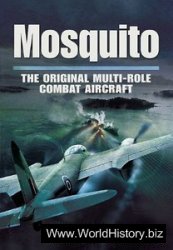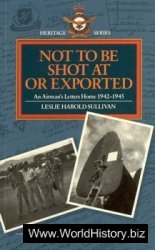By 1900, the United States had become the world’s dominant steel producer. Record demand for its products in the construction of skyscrapers, ships, and railroads had made the industry the engine of the nation’s economy as well. The steel industry had prospered by the dynamic growth of city construction in the 1890s. It also had drawn strength from such changes as improved and expanding urban transport systems, the rebuilding of railroads with new, heavier steel rails, and the introduction of nickel-plated steel armor on battleships during the naval rearmament efforts at the turn of the century. In each of these arenas, new technologies and methods of organization had driven out small firms and increased the demand for capital to expand and improve steel production.
The fortunes that were made in steel did not, however, guarantee the industry’s profitability. Fueled by Andrew Carnegie’s cutthroat methods, competition among steel firms had made the steel industry and subsidiary concerns in railroad transportation and iron, coke, and coal mining prone to sharp drops in profit, periodic recession, and market chaos. Major industrial and finance capitalists such as John D. Rockefeller and John Pierpont Morgan had invested in the field as a means of stabilizing their own enterprises. In the late 1890s, however, Carnegie once again threatened to undercut competitors when he moved from producing raw steel to constructing a finishing plant to make steel tubes and girders and building his own rail link from the plant to Pittsburgh. These moves directly threatened both Federal Steel, a competitor directed by Elbert Gary and financed by Morgan, and the Pennsylvania Railroad. Contacting Carnegie’s superintendent, Charles Schwab, Morgan proposed a gigantic merger of Carnegie Steel with Federal Steel and a host of subsidiaries, including American Bridge and National Tube. Founded in February 1901 at the end of a decade-long merger movement in the industry, U. S. Steel was the brainchild of Schwab and Morgan.
U. S. Steel became the nation’s largest corporation with over $1.4 billion in assets and control of 65 percent of the
Market in steel production. It employed over 168,000 workers at the time (the number would grow to over 350,000 by 1920). Its holdings included 41 iron mines, 213 steel mills, 78 blast furnaces, 1,100 miles of rail, and 112 Great Lakes iron ore boats. The industrial empire continued to acquire new properties throughout the first three decades of the 20th century. While U. S. Steel lost some market share due to the growth of the market and new competition, especially in sheet steel, it dominated the steel industry, controlled large parts of the subsidiary economy, and had substantial influence on government at all levels.
The consolidation of steel manufacture under U. S. Steel had, however, detrimental effects on innovation in the industry. Up to 1900, Carnegie Steel had been a leader in improving the quality of open-hearth steel beams for construction. Now under the U. S. Steel Corporation name, Carnegie Steel lost its place as an industry leader. Since stability was the key goal of the U. S. Steel merger, there was little incentive for innovation. Technological change came, instead, from smaller and more marginal firms, most of which were outside the U. S. Steel combine. Midvale Steel, a subsidiary firm, was the location of Frederick Winslow Taylor’s experiments in cutting metal and his reorganization of the labor force and production later known as sci-entieic management. Bethlehem Steel, a smaller firm that earlier competed with Carnegie Steel in steel beam construction and the production of armor plating, constantly worked on improving its product and became a premier government contracting firm. It reinvested its profits from World War I defense production and became the second largest steel producer in the United States by the 1920s. Finally, in the areas of high-speed steel for machine tools and alloy, sheet and electric steel, it was the smaller start-up companies that made a difference. Automobile manufacturers, the largest consumer of domestic steel in the 1920s, experimented with producing their own steel and created the alloy steels for new models. Alloying steel with nickel, chromium, vanadium, manganese, and molybdenum made it both stronger and more flexible for molding into bumpers, fenders, and other automobile parts. Continuous sheet steel, another innovation of the period, helped to guarantee automobile makers the supply of steel they needed for body parts.
Since the cataclysmic Homestead strike of 1892, the steel industry steadily decreased its dependence on union labor and worked to drive labor union organization out of steel plants. The Amalgamated Association of Iron and Steel Workers, which originally had contracts with several major firms, was locked out of steel manufacturing plants and steadily declined in numbers and influence in the late 19th and early 20th centuries. The changing division of labor in steel factories de-skilled steel production and replaced skilled iron puddlers and boilers with semiskilled production workers and a resulting decline in wages. This shift affected the ethnic makeup of the labor force, and the average steel worker of the early 20th century was an eastern or southern European immigrant workingman, with little formal schooling and few resources. He usually had limited English and had little recourse to employer demands. In the workplace, corporate leaders insisted that steel production in blast, Bessemer, or open-hearth furnaces required 24-hour production. While hours varied by occupation, more than 60 percent of the steel labor force worked between 60 and 84 hours per week. That often meant two standard 12-hour shifts with a long turn (24-hour shift) every two weeks. Dangerous heat and heavy machinery, unstable production methods (explosions were a common occurrence), and fatigued workers led to a shockingly high rate of industrial accidents in the steel industry.
Wage cuts in the wake of industry downturns led to labor disturbances in 1907, 1909, and 1919. U. S. Steel and its competitors such as Bethlehem and Republic Steel had no intention of recognizing and bargaining with unions. With the decline of the Amalgamated union, labor conflicts in the steel industry were, for the most part, not a welcome occurrence for the weakened union. Workers protested informally and struck collectively, largely without union support. Organized under the American Federation OE Labor, however, the Steel Strike oe 1919 brought union resources to the industry. The largest segment of striking workers was, in fact, new to unionism. William Z. Foster, a radical trade unionist, and John Fitzpatrick, a Chicago trade unionist, led the drive to organize the mass-production steel industry. They had organized more than 100,000 when they began to ask for government mediation in the industry. When U. S. Steel president Elbert Gary refused to negotiate, more than 365,000 workers went out on strike in protest of the post-World War I wage cuts. Between September 1919 and January 1920, the strike held the attention of the industry and nation. U. S. Steel called on the Pennsylvania State Constabulary to repress unionism in the Pittsburgh area, and their Gary, Indiana, plants drew on local police to break up picket lines and protect replacement workers. The strike was broken, and industrial unionism in steel became moribund.
The immediate postwar crisis of unemployment had little long-term impact on the steel industry, which recovered strongly under the economic boom of the 1920s. It used the profits of wartime production to retain its dominance in the world steel market, including growing exports to Japan. At the same time, riding on the coattails of an expanding domestic automobile market, profits in steel hit record levels. U. S. Steel kept growing, even as it began to slowly trim its labor force. The automobile industry was a force for steel industry expansion, as steel continued to expand its production facilities in the Great Lakes region, especially around Detroit, and in the South. Despite its positive growth, a looming economic crisis threatened to undermine the stability and prosperity of the steel industry. Overextended credit and over-expanded production facilities allowed little room for the drop in demand in the late 1920s. Overstocked automobile manufacturers and growing unemployment suggested that the boom times of the steel industry, begun in the 1890s, were about to come to an end.
See also foreign trade.
Further reading: William Thomas Hogan, Economic History of the Iron and Steel Industries in the United States (Lexington: Health, 1971); Thomas J. Misa, A Nation of Steel: The Making of Modern America, 1865-1925 (Baltimore: Johns Hopkins University Press, 1995); William Ser-rin, Homestead: The Glory and Tragedy of an American Steel Town (New York: Random House, 1992).




 World History
World History









